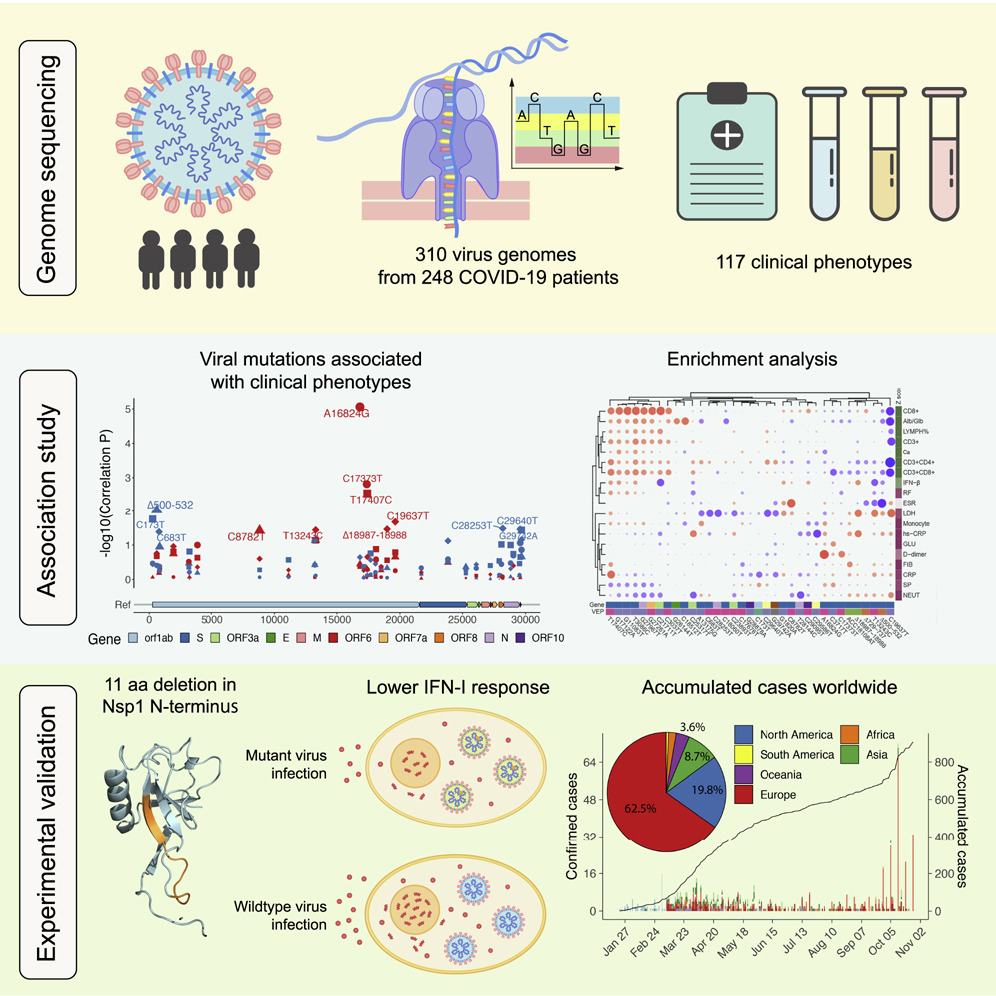
On Jan. 29, 2021, West China Hospital, Sichuan University reported a novel SARS-Cov-2 Nsp1(Δ500-532) mutant with important clinical relevance, and analysed its characteristics from the perspectives of molecular epidemic, clinical manifestations, in vitro and in vivo experiments. It has been published in the internationally-renowned academic journal Cell Host & Microbe (IF 15.7) as a research paper titled “Genomic Monitoring of SARS-CoV-2 Uncovers an Nsp1 Deletion Variant That Modulates Type I Interferon Response”.
Nonstructural protein 1 (Nsp1) is a 180-amino acid protein encoded by SARS-Cov-2 virus. The University of Munich has reported in Science that Nsp1 can bind with the 40S ribosomal subunit, resulting in the inhibition of mRNA translation of host cells and blocking RIG-I-dependent innate immune response. Utilizing an integrative approach combining epidemiology, virus genome sequencing, clinical phenotyping and experimental validation to locate virus mutations of clinical importance, the researchers identified 35 recurrent variants, some of which are associated with clinical phenotypes related to severity. One variant, Δ500-532 deletion in Nsp1-coding region was found in more than 20% of our sequenced samples and associated with higher RT-PCR cycle thresholds in SARS-CoV-2 test and lower serum IFN-β levels of infected patients. Deletion variants in this region were found in 37 countries worldwide and viruses isolated from clinical samples or engineered by reverse genetics with related deletions in Nsp1 were also found inducing lower IFN-β response in the infected Calu-3 cells. Taken together, this virologic surveillance characterized recurrent genetic diversity and identified mutations in Nsp1 of biological and clinical importance, which collectively may aid molecular diagnostics and drug design.
The project was jointly completed by many institutes. Prof. Chen Lu, Prof. Ying Binwu, Prof. Geng Jia and Prof. Li Weimin and Prof. Lin Jing-wen and Dr. Teemu Smura were the co-corresponding authors, and PhD students Tang Chao and Wei Han-cheng et al. were the co-first authors of the paper.
Link to original text: https://doi.org/10.1016/j.chom.2021.01.015